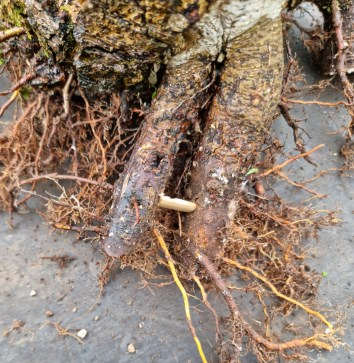
photo by david travis
1951 Red Pine
I took over care of a Japanese red pine in December of 2017 from a very good friend who had the tree for many years. It is an old Koreshoff pine that was grown from seed planted in 1951.

Working the Nebari
This repot is to try to correct the large and thick roots around the nebari.

Jin and Shari
Jin and Shari are usually synonymous with coniferous trees. As they age branches succumb to death as apical dominance, severe weather and (sometimes) human interaction causes the resource pathways of a tree to change resulting in branch death or partial trunk death. These natural occurrences happen a lot in our native trees as well, with the eucalyptus and angophora often showing jin and shari.

Bonsai Basics - The Trunk
A good trunk can make the visual difference between an aged tree and a juvenile tree. After you have established the root system this is the next stage you need to work on. The trunk should have the look of an aged tree and must have taper from the base right up to the tip or apex of the tree. The size or diameter at the base should be of good size compared to the height of the tree but is not always the case.

Too much of a good thing
The substrate must be allowed to partially dry out between watering to allow new roots to develop and start to ‘search’ for moisture. If watered too much the roots will struggle to grow and can develop disease if not remedied.

The Nebari
The nebari, or surface rootage of a bonsai is, in my opinion, the most important and determining feature on a bonsai. After the initial outline or silhouette of the tree, it is the first place most of us will look to when we first gaze upon a bonsai.

Watering - There's more
A tree will suffer greatly from any period of underwatering, but will survive short periods of overwatering as long as it isn’t chronic. Always better to err on the side of caution.

Refinement
Refinement is the second stage to growing a bonsai. This stage never ends and as bonsai are living and ever changing, so too refinement changes and shifts over time.
